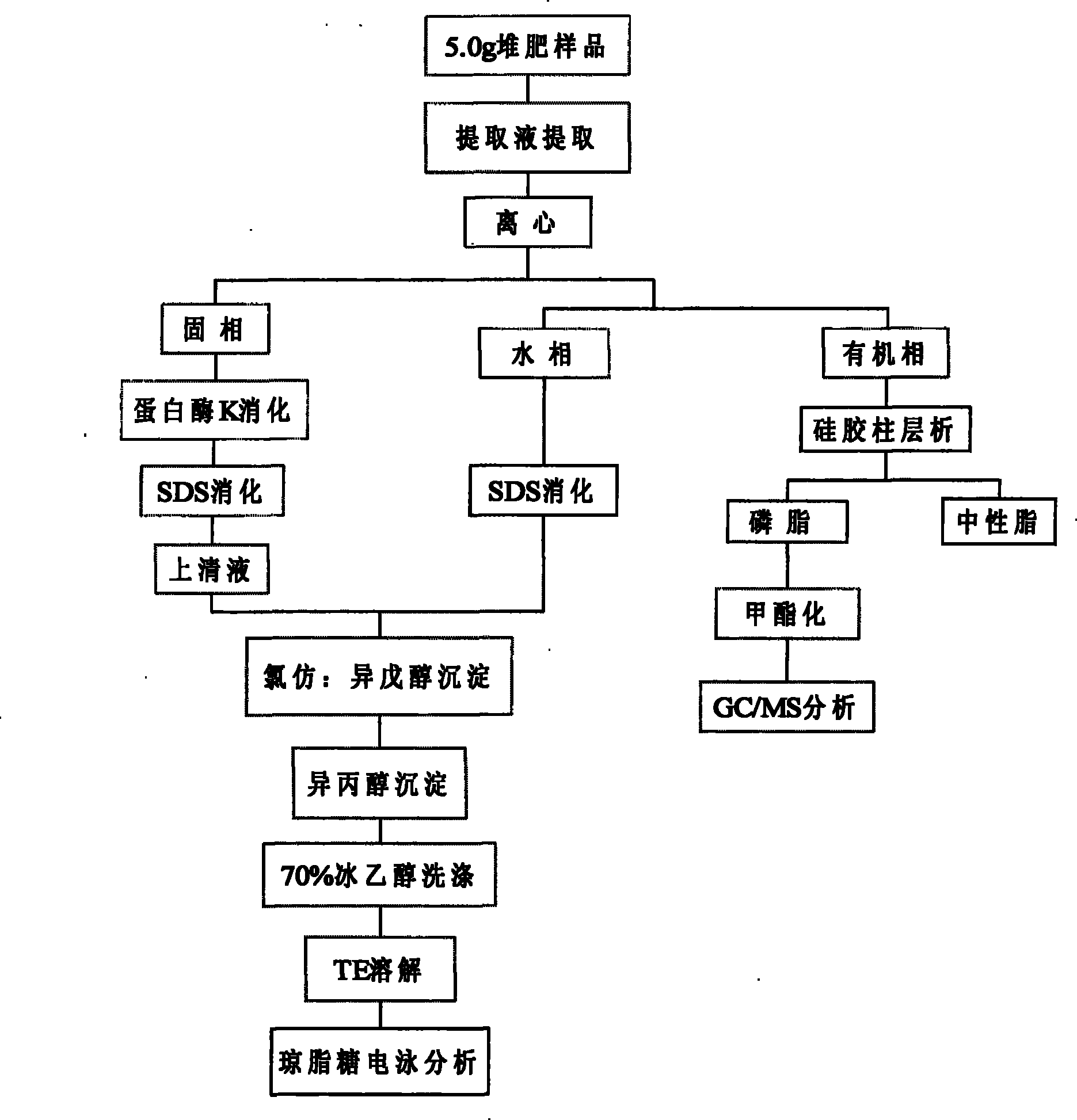Method for simultaneously extracting compost sample PLFA and DNA
A sample and composting technology, applied in the preparation of test samples, etc., can solve the problems of cumbersome extraction steps and achieve the effects of simplifying the extraction procedure, reducing errors, and shortening the time
- Summary
- Abstract
- Description
- Claims
- Application Information
AI Technical Summary
Problems solved by technology
Method used
Image
Examples
Embodiment Construction
[0028] 1. Extraction of PLFA (as shown in Figure 1)
[0029] (1-1) Weigh 5.00g of compost sample into a glass tube with a polytetrafluoroethylene cover, add 5mL of dichloromethane, 10mL of methanol, and 5mL of phosphate buffer solution (pH 7.4, 0.05mol / L);
[0030] (1-2) After ultrasonic homogenization for 10 minutes, stand overnight at 4°C in the dark;
[0031] (1-3) Centrifuge for 20 minutes at a speed of 8000 rpm. Transfer the liquid phase to a new glass tube, then add 5mL dichloromethane and 4mL pure water to continue extracting PLFA; store the solid phase at -20°C for DNA extraction;
[0032] (1-4) After standing still for 24 hours, transfer the aqueous phase to a new centrifuge tube a for DNA precipitation; filter the organic phase with a 4# fiber filter membrane; use a nitrogen blowing instrument (DC-12, Shanghai Anpu Science) for the filtrate Instrument Co., Ltd.) after drying, add 2 mL of n-hexane to dissolve (if the dissolution effect is not good, you can add a dro...
PUM
 Login to View More
Login to View More Abstract
Description
Claims
Application Information
 Login to View More
Login to View More - R&D
- Intellectual Property
- Life Sciences
- Materials
- Tech Scout
- Unparalleled Data Quality
- Higher Quality Content
- 60% Fewer Hallucinations
Browse by: Latest US Patents, China's latest patents, Technical Efficacy Thesaurus, Application Domain, Technology Topic, Popular Technical Reports.
© 2025 PatSnap. All rights reserved.Legal|Privacy policy|Modern Slavery Act Transparency Statement|Sitemap|About US| Contact US: help@patsnap.com

